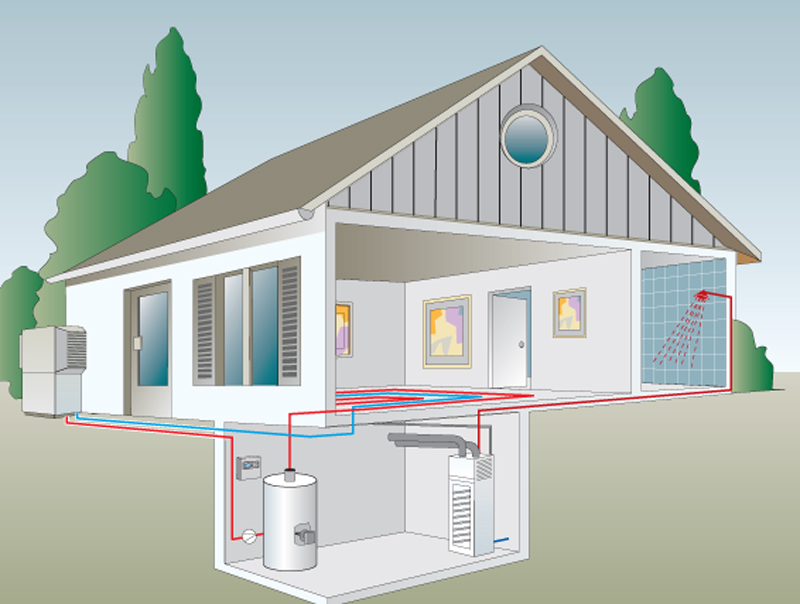UNDERFLOOR HEATING
Underfloor Heating : The best heating solution for winter!
Lets learn what underfloor heating is!
Underfloor water heating
Underfloor heating works by heating the space through a network of pipes installed beneath the floor, with hot water circulating through them. This creates a heating panel in the floor. Unlike conventional systems, the hot water doesn’t go to radiators but flows through the pipes, providing heat to the floor. Once the floor is heated, it evenly releases heat into the room.
The temperature of the water flowing through the pipes ranges between 35-45 degrees Celsius, and the heat is absorbed by the floor and radiated into the space, achieving a uniform heat distribution. The important thing is that the low floor temperature does not disturb the human body, making underfloor heating a healthy heating option.
One of the affordable aspects of underfloor heating is that the water temperature is much lower compared to other systems, such as oil heating, etc. This means the system operates for less time to reach the desired temperature, reducing both operational costs and environmental impact, as fewer operating hours result in lower emissions.
In addition, underfloor heating does not restrict the selection of flooring materials (e.g., tiles, marble) and can be paired with automation systems to customize the temperature in various rooms as needed.
Ultimately, the choice of underfloor heating offers more free space, as radiators are not required, allowing for greater creativity in the space’s decoration and optimal use.

Underfloor heating with a heat pump
Underfloor heating works harmoniously with heat pumps. The role of the heat pump is to extract and utilize heat from the surrounding air or ground, then distribute this heat throughout the house via the underfloor heating system. The hot water from the heat pump circulates through pipes installed beneath the floor and radiates heat upwards, warming the interior of the home.
Underfloor heating can be perfectly integrated with heat pumps. The main reason for this is cost-effectiveness and energy efficiency, as heat pumps operate efficiently when producing hot water at low temperatures, which is the ideal condition for underfloor heating.
One of the main advantages of underfloor heating combined with heat pumps is its exceptional energy efficiency. The role of heat pumps is to transfer heat rather than generate it. When this is combined with underfloor heating, the combination offers an extremely efficient solution compared to traditional heating systems.

Use of Electric Underfloor Heating
In an electric underfloor heating system, a series of electrical cables are placed either beneath the floor or within it. Using electricity, the heating of a room or even an indoor area such as the bathroom or kitchen is achieved.
The installation of the system depends on various factors, such as the size of the room, the quality of the insulation, the type of flooring, and its surface. All options include flexible electrical wiring that can be adapted to small spaces, as well as electrically heated mats that can cover larger areas.
There are various types of electric underfloor heating systems available. While the basic operation principle is the same across all electric heating methods, electric current passing through resistors to generate heat, these systems are customized to suit different needs. The heat generated by electric underfloor heating spreads across the area, warming the environment.
Electric underfloor heating is relatively easy to install, but it comes with the drawback of higher operating costs. The electricity consumption depends on the power used. This heating method is suitable for heating small spaces and apartments, where efficient heating is required without the need for a burner or boiler.

